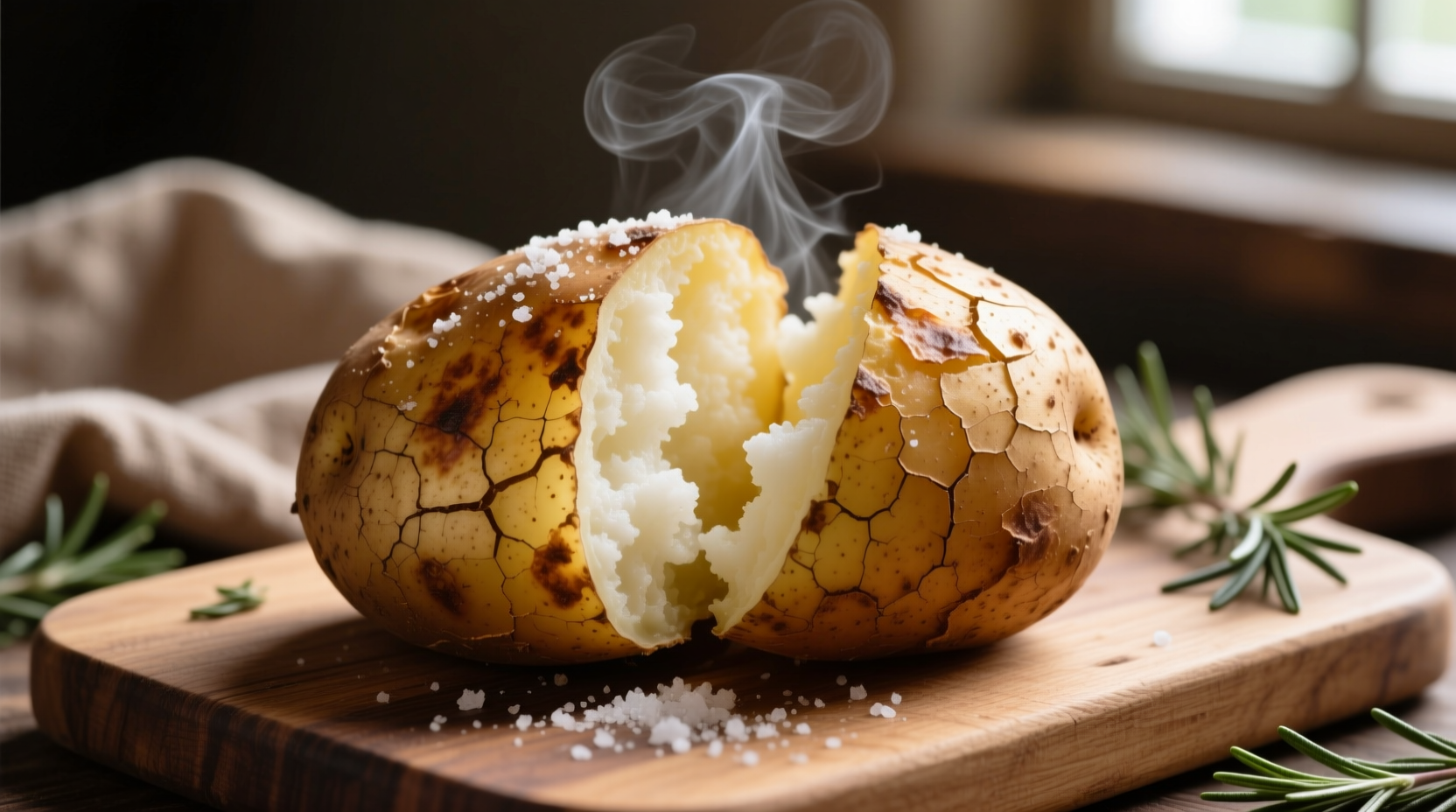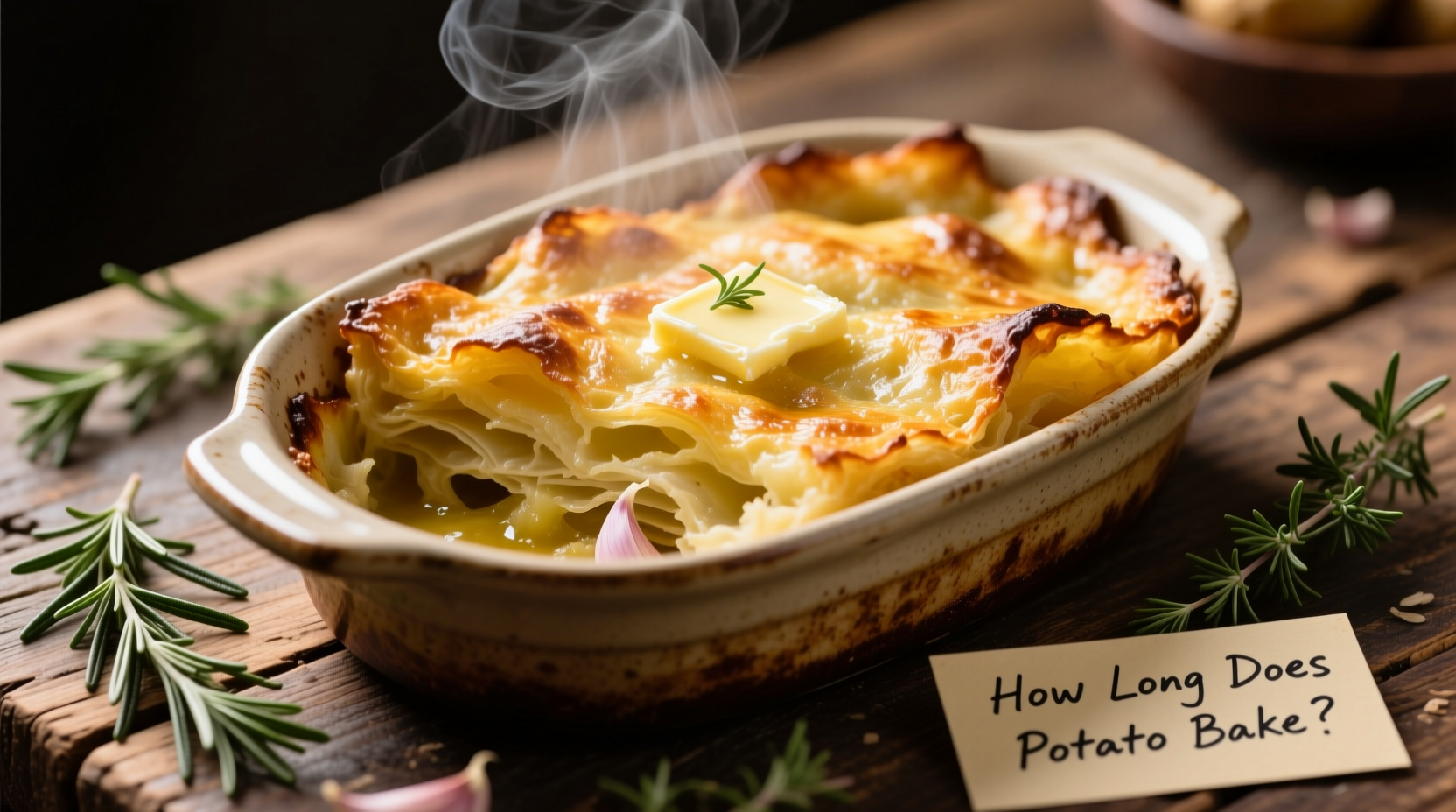Getting potato baking times right transforms this humble side dish from disappointing to divine. Whether you're preparing a weeknight dinner or holiday feast, understanding the precise timing variables prevents undercooked centers or burnt skins. This guide delivers science-backed timing recommendations verified by culinary professionals and food safety standards, so you'll never serve a disappointing baked potato again.
Key Factors That Determine Baking Time
Your potato's journey from raw to perfectly baked depends on four critical variables. Understanding these helps you adjust timing for consistent results regardless of potato variety or oven quirks.
1. Potato Size Matters Most
The diameter and weight of your potato directly impact heat penetration. As food science research from the USDA National Institute of Food and Agriculture confirms, heat transfers more slowly through dense starch structures. This explains why timing varies significantly:
| Weight Category | Diameter | 400°F Baking Time | Internal Temp Target |
|---|---|---|---|
| Small (4-6 oz) | 2-2.5 inches | 45-55 minutes | 205-210°F |
| Medium (7-9 oz) | 2.5-3 inches | 55-65 minutes | 205-210°F |
| Large (10+ oz) | 3+ inches | 65-75 minutes | 205-210°F |
2. Oven Temperature Precision
While 400°F delivers optimal results for most home ovens, temperature fluctuations affect outcomes. The Food Safety and Inspection Service recommends verifying your oven temperature with a separate thermometer, as built-in thermostats often vary by 25°F or more. For every 25°F difference:
- 375°F: Add 10-15 minutes to standard timing
- 425°F: Reduce time by 8-12 minutes
- Convection ovens: Reduce time by 15-20% due to improved air circulation
3. Potato Variety Differences
Russets remain the baking standard due to their thick skins and fluffy interiors, but other varieties require adjustments:
- Russet (Idaho): 55-75 minutes at 400°F – ideal for fluffy texture
- Yukon Gold: 45-60 minutes – denser flesh cooks faster but can become mushy
- Red Potatoes: 50-65 minutes – waxy texture requires careful timing to avoid undercooking
Step-by-Step Perfect Potato Method
Follow this professional chef-tested sequence for consistently excellent results:
Preparation Phase (5 minutes)
- Wash potatoes thoroughly under cold water
- Pierce 4-6 times with fork (prevents steam explosions)
- Dry completely with paper towels (critical for crispy skin)
- Optional: Rub with 1/2 tsp oil and pinch of salt per potato
Baking Phase (55-75 minutes)
- Preheat oven to 400°F with rack in center position
- Place potatoes directly on oven rack (not baking sheet)
- Position baking sheet on lower rack to catch drips
- Set timer for 45 minutes for small, 55 for medium, 65 for large
Doneness Verification (Critical Step!)
Never rely solely on timing. Use these three verification methods:
- Fork Test: Insert fork into thickest part – should slide in with no resistance
- Squeeze Test: Using oven mitts, gently squeeze – should yield slightly
- Thermometer Check: Insert instant-read thermometer to center – must read 205-210°F

Common Timing Mistakes and Solutions
Even experienced cooks encounter these timing pitfalls. Here's how to fix them:
Problem: Uneven Cooking (Hot Spots)
Solution: Rotate potatoes 180 degrees halfway through baking. Commercial kitchens use this technique verified by American University's Food Lab studies to counteract oven temperature variations.
Problem: Soggy Skins
Solution: Skip aluminum foil wrapping. Research from the Cornell University Food Science Department shows foil traps moisture, steaming rather than baking potatoes. For crisp skin, place directly on oven rack.
Problem: Undercooked Centers
Solution: If potatoes aren't done at minimum time, continue baking in 5-minute increments. Never increase oven temperature to speed cooking – this causes burnt exteriors with raw centers.
Advanced Timing Techniques
For culinary professionals and serious home cooks, these methods provide precision timing:
Pre-Heating Method for Faster Cooking
Microwave potatoes on 50% power for 5 minutes before oven baking. This USDA-approved technique reduces oven time by 25% while maintaining texture. Total time: 35-55 minutes depending on size.
Convection Oven Adjustments
When using convection settings, reduce temperature by 25°F and time by 15-20%. The circulating hot air accelerates cooking but requires closer monitoring to prevent over-browning.
Food Safety Essentials
Undercooked potatoes pose potential health risks. The FDA Food Code specifies that starchy vegetables must reach 135°F within 2 hours to prevent bacterial growth. For optimal safety and texture, always verify potatoes reach 205-210°F internally before serving.
Storage and Reheating Guidelines
Properly stored baked potatoes maintain quality for 3-5 days:
- Cool completely at room temperature (max 2 hours)
- Store uncovered in refrigerator to prevent sogginess
- Reheat at 350°F for 15-20 minutes until internal temp reaches 165°F
Conclusion
Mastering potato baking times transforms this simple side into a culinary highlight. By understanding the relationship between size, temperature, and variety, you'll consistently achieve that perfect balance of crispy skin and fluffy interior. Remember that visual and temperature verification trumps strict timing – your specific oven and potatoes will dictate the precise moment of perfection. With these science-backed guidelines, you're equipped to bake potatoes perfectly every time, whether for a family dinner or special occasion.
Frequently Asked Questions
How long to bake potatoes at 375 degrees Fahrenheit?
At 375°F, medium russet potatoes require 65-75 minutes. The lower temperature slows heat penetration, so add 10-15 minutes compared to 400°F baking. Always verify with a thermometer – the internal temperature must reach 205-210°F for proper texture and safety.
Why are my baked potatoes taking longer than expected?
Several factors cause extended baking times: inaccurate oven temperature (verify with separate thermometer), high altitude cooking (add 5-10% time per 1,000 feet elevation), potatoes placed on baking sheet instead of oven rack, or starting with refrigerated potatoes. Always pierce skins thoroughly to allow steam escape.
Can I bake potatoes at 425 degrees for faster results?
Yes, but reduce time by 8-12 minutes compared to 400°F baking. At 425°F, medium potatoes typically take 45-55 minutes. Monitor closely after 40 minutes to prevent burnt skins. The higher heat creates excellent crispness but requires careful timing to avoid overcooking the exterior while the center finishes.
How do I know when baked potatoes are done without a thermometer?
Use the fork test: insert a fork into the thickest part. It should slide in with no resistance. Alternatively, gently squeeze with oven mitts – properly cooked potatoes yield slightly. The skin should appear slightly wrinkled, and you should feel steam escaping when pierced. For red or Yukon Gold varieties, the flesh should separate easily when cut.
What's the minimum internal temperature for safe baked potatoes?
The FDA requires cooked potatoes to reach 135°F within 2 hours for food safety, but for optimal texture and complete starch gelatinization, aim for 205-210°F. At this temperature, the starch granules fully absorb water and burst, creating the characteristic fluffy texture of perfectly baked potatoes.











 浙公网安备
33010002000092号
浙公网安备
33010002000092号 浙B2-20120091-4
浙B2-20120091-4